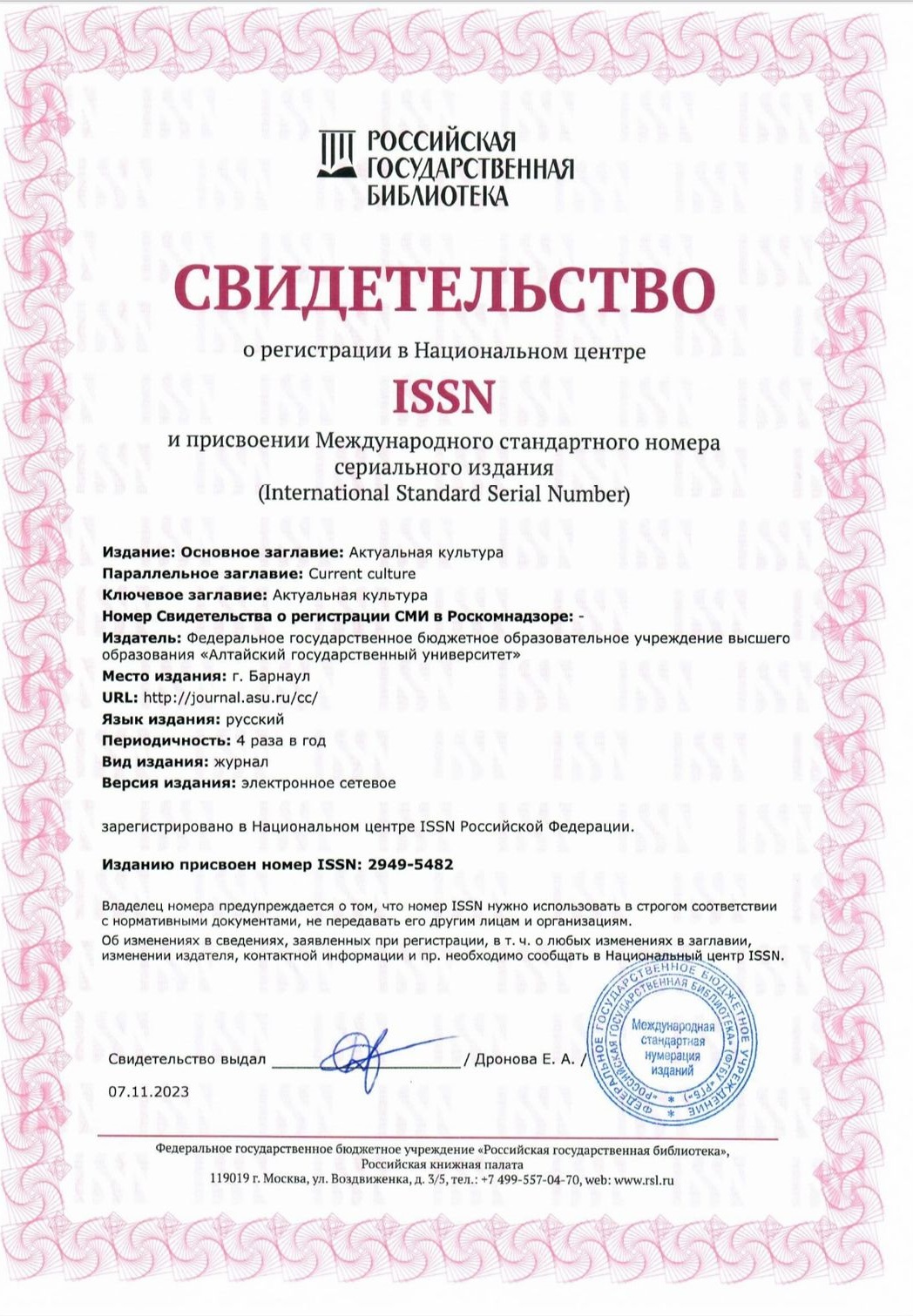Exploring the Impact of AI Painting on Traditional Chinese Art: Opportunities, Challenges and Future Directions
Аннотация
Exploring the Impact of AI Painting on Traditional Chinese Art: Opportunities, Challenges and Future Directions
Скачивания
Данные скачивания пока недоступны.
Литература
Cahill, J. (1983). Chinese Painting. Skira.
Dai, H. (2023). Ethical reflections on AI-generated art—taking AI painting as an example. Natural Dialectics. № 39(10).
Duan, J., & Yan, K. (2023). The aesthetic significance of AI-generated art and post-human technology. Journal of Xiamen University (Philosophy and Social Sciences Edition). № 73(06).
Ge, Y. (2023). The deconstruction and reconstruction of painting art under the mapping of science and technology. Art Education. Vol. (09).
Huang, X., & Chen, Y. (2022). AI Art: Concepts, Techniques, and Implications. Journal of New Media and Culture. № 7(3). Р. 1-15.
Li, J. (2023). The application of traditional Chinese painting elements in digital illustration. Tomorrow Fashion. Vol. (06).
Liu, S. (2019, August 23). Tencent AI Lab Generates Traditional Chinese Painting Using AI. China Daily. https://www.chinadaily.com.cn/a/201908/23/WSd5f9f2ea310cf3e355679f1.html
Manovich, L. (2018). AI Aesthetics. Strelka Press.
Shang, H. (2010). The historical accumulation and realistic integration of Chinese contemporary art criticism system. Art Observation. Vol. (01).
Shang, H. (2012). The artistic situation of urban culture era. Beauty and Times. Vol. (04).
Shang, H. (2015). Constructing a contemporary Chinese art value system with nationality and people at its core. Chinese Literature and Art Review (01).
Wang, D. (2017). Research on art mediation in the digital age [Doctoral dissertation]. Nanjing University of the Arts.
Wu, D. (2023). Art creation in the new era under new media and new technologies. Yihai. Vol. (04).
Wu, L. (2015). Research on the inheritance and development of Chinese painting from the perspective of new media [Master's thesis]. Yunnan Arts University.
Yao, T., & Xiao, Y. (2023). Discussion on the communication path of traditional Chinese painting from the perspective of new media art. Jiangsu Social Sciences. Vol. (07).
Zhang, L. (2020). On the similarities and differences of aesthetic characteristics between new media art and traditional art. Beauty and Times. Vol. (06).
Zuo, Q. (2019). The influence of automated digital technology on traditional Chinese painting. Hundred Schools in Arts. Vol. (03).
Zylinska, J. (2020). AI Art and the Future of Creativity. Routledge.
Dai, H. (2023). Ethical reflections on AI-generated art—taking AI painting as an example. Natural Dialectics. № 39(10).
Duan, J., & Yan, K. (2023). The aesthetic significance of AI-generated art and post-human technology. Journal of Xiamen University (Philosophy and Social Sciences Edition). № 73(06).
Ge, Y. (2023). The deconstruction and reconstruction of painting art under the mapping of science and technology. Art Education. Vol. (09).
Huang, X., & Chen, Y. (2022). AI Art: Concepts, Techniques, and Implications. Journal of New Media and Culture. № 7(3). Р. 1-15.
Li, J. (2023). The application of traditional Chinese painting elements in digital illustration. Tomorrow Fashion. Vol. (06).
Liu, S. (2019, August 23). Tencent AI Lab Generates Traditional Chinese Painting Using AI. China Daily. https://www.chinadaily.com.cn/a/201908/23/WSd5f9f2ea310cf3e355679f1.html
Manovich, L. (2018). AI Aesthetics. Strelka Press.
Shang, H. (2010). The historical accumulation and realistic integration of Chinese contemporary art criticism system. Art Observation. Vol. (01).
Shang, H. (2012). The artistic situation of urban culture era. Beauty and Times. Vol. (04).
Shang, H. (2015). Constructing a contemporary Chinese art value system with nationality and people at its core. Chinese Literature and Art Review (01).
Wang, D. (2017). Research on art mediation in the digital age [Doctoral dissertation]. Nanjing University of the Arts.
Wu, D. (2023). Art creation in the new era under new media and new technologies. Yihai. Vol. (04).
Wu, L. (2015). Research on the inheritance and development of Chinese painting from the perspective of new media [Master's thesis]. Yunnan Arts University.
Yao, T., & Xiao, Y. (2023). Discussion on the communication path of traditional Chinese painting from the perspective of new media art. Jiangsu Social Sciences. Vol. (07).
Zhang, L. (2020). On the similarities and differences of aesthetic characteristics between new media art and traditional art. Beauty and Times. Vol. (06).
Zuo, Q. (2019). The influence of automated digital technology on traditional Chinese painting. Hundred Schools in Arts. Vol. (03).
Zylinska, J. (2020). AI Art and the Future of Creativity. Routledge.

Опубликован
2024-07-01
Как цитировать
1. Songjie H. Exploring the Impact of AI Painting on Traditional Chinese Art: Opportunities, Challenges and Future Directions // АКТУАЛЬНАЯ КУЛЬТУРА, 2024. № 2. С. 1-11. URL: http://journal.asu.ru/cc/article/view/15446.
Раздел
Статьи





